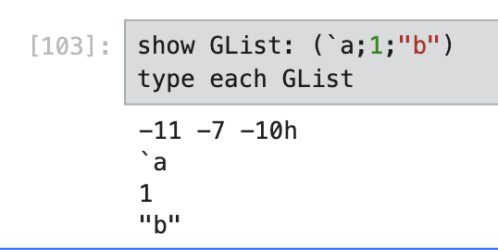-
kdb+/q Developer Lv2 – list indexing : exercise GList just before 4.2 for type
Q1: why the type each GList not give -11h -7h -10h instead of -11 -7 -10h with only 3rd element with h for short value?
Q2: the ipynb notebook seems to give results not following the command order,
shouldn’t it be below if it respects the command query order?
my query and expected results:
type `a
type 1
type “b”
-11h -7h -10h
while the offical query and results look -11 -7 -10h so -11 is long -7 is long? or shorthand it is all short for h but just show for the last 3rd element?
-
This discussion was modified 3 days, 18 hours ago by
 Ken__.
Ken__.
-
This discussion was modified 3 days, 18 hours ago by
 Ken__.
Ken__.
-
This discussion was modified 3 days, 18 hours ago by
 Ken__.
Ken__.
-
This discussion was modified 3 days, 18 hours ago by
 Ken__.
Ken__.
-
This discussion was modified 3 days, 18 hours ago by
 Ken__.
Ken__.
-
This discussion was modified 3 days, 18 hours ago by
 Ken__.
Ken__.
-
This discussion was modified 3 days, 18 hours ago by
 Ken__.
Ken__.
-
This discussion was modified 3 days, 18 hours ago by
Log in to reply.



